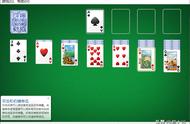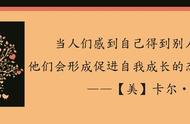
No nurse wants to be the cause of a fatal medication error, yet every shift we give medicines that are considered high-risk.
没有护士想要造成致命的用药错误,尽管在上班的时候小心谨慎,也还是处于高风险的窘境。
The report prepared by the Quality Use of Medicines and Pharmacy Research Centre (Roughead, Semple & Rosenfeld 2013) has recognised the significant danger that a few groups of medications pose. The acronym APINCH is designed to serve as a reminder that even routinely administered medicines pose a high risk to patient safety.
据用药质量控制和药学研究中心(2013年Roughead,Semple&Rosenfeld)研究报告显示,有数组药物存在严重的危险。有一组缩写为APINCH的药物提醒我们,即使是常规药也会对患者安全造成威胁。
APINCH
A – Anti-infectives
A-抗感染药物
P – Potassium and other electrolytes
P-钾及其他电解质
I – Insulin
I-胰岛素
N – Narcotics and other sedatives
N-麻醉剂及其他镇静剂
C – Chemotherapeutic agents
C-化疗药物
H – Heparin and other anticoagulants
H-肝素及其他抗凝剂

High Risk Medication Errors
高危用药错误
High risk medications are those that have a high chance of causing harm if they are misused or used in error. They are generally medicines with a narrow therapeutic index. This means that the difference between a medicine’s desired effect (efficacy) and a lethal or toxic dose (potency) is very small. In other words, a small increase in the medicine’s concentration in the body could lead to toxic levels and fatal consequences (Roughead, Semple & Rosenfeld 2013).
高危药物是指那些如果滥用或是错误使用后造成伤害的药物。这些药物一般都是治疗指标单一的药物。这就意味着药物的预期效果(功效)与致命性或是毒性(效力)是同时存在的。换句话说,体内药物浓度的小幅度增加会导致毒性剧增,甚至是致命的后果(Roughead,Semple&Rosenfeld2013).
Can you guess what some of these high risk medications are? You’ve probably given at least five of the six medicine classes today.
你能猜出这些高风险的药物有哪些吗?你可能已经知道得八九不离十了。
Medication errors can drive nurses to feelings of guilt, and sometimes worse. However, nurses are human, and medication errors can happen. We have a responsibility to find ways of minimising them though, to keep our patients safe.
用药错误会引发护士的罪恶感,有时甚至更糟糕。然而,常在河边走,怎能不湿鞋。尽管如此,我们还是必须将大事化小,小事化了,以确保患者的安全。
Medication errors can happen anywhere along the chain of the process. Errors can occur with prescribing, documenting, transcribing, dispensing, administering and monitoring. At all these points along the chain, a nurse has to step in and double-check that everyone, from the doctor to the pharmacist, performed their job correctly. A nurse also has to double-check themselves. With all of this responsibility falling to one person, it is no wonder that errors happen.
用药错误可能在整个治疗过程的任何一个环节发生,如处方,记录,转抄,配药,给药和核对上。在整个环节的所有要点上,护士都必须介入并进行双重核查,从医生到药剂师,都要确保他们的工作无误。护士同时也要对自己的操作进行核对,几乎参与了整个过程,这也就不奇怪错误在所难免了。
Ordering the wrong medicine accounts for almost half of all medication errors. It is when the error comes all the way to administration that the most harm occurs. Administration errors are the only ones that no-one else can fix. Nurses have to find better ways of streamlining their process and handling medications safely.
医生开错医嘱几乎占据了用药错误的一半,当错误出现时所有的伤害都会随之而发生,一旦把药错误地给到病人身上再去补救就为时已晚了。因此,护士们必须想办法来简化流程,正确给药,保障用药安全。
这里分享一个临床药师制定的针对患者用药安全的策略:“SIMPLE”计划,即专注于与患者的沟通技巧,文化敏感性以及以病人为中心的护理。
S —Simplify the regimen 简化服药方案(比如调整服药时间,剂量和频率,以便更容易养成服药习惯)
I —Impart knowledge 传递知识(比如分发有关用药或关于健康状况的书面资料)
M —Modify patient beliefs and behaviors 改变患者的信念和行为(比如评估坚持服药的好处及会遇到的阻碍)
P —Provide communication and trust 提供沟通和信任(比如积极倾听患者声音)
L —Leave the bias 摒弃偏见(比如调整教育到患者能理解的水平)
E —Evaluate adherence 坚持评估(比如跟进患者确保他们服药)

Most nurses have been taught the 8 Rights of Medication Administration, but here is a refresher:
大多数护士都有学过八大用药经验总结,让我们复习下:
1、Right Patient – use the three national patient identifiers to ensure that you are giving the medication to the patient it is intended for. Ask the patient to tell you their name while you check their unit record number (URN) and verify their date of birth. Then check the patient history you have matches the URN on their wrist.
正确的病人---使用3种方法对患者身份进行标识,保证给药对象准确无误。在核对病人的住院号及出生日期时,要病人主动提供信息,通过与之相匹配的手腕带上的住院号全面了解其病史。
2、Right Medication --- check that the medication you are giving is the one that was actually ordered.
正确的药物-核查所给的药物是否与医嘱一致。
3、Right Dose – check that the order is appropriate for the patient. Too much or too little of a properly ordered medication can still cause issues for the patient.
正确的剂量---核查医嘱是否适宜患者。药物剂量过多或过少也会对患者造成影响。
4、Right Route – when checking the medication, it is important to determine whether you are giving the medication by the correct route. It is important to check that the order meets these requirements as well, and that the route is appropriate.
正确的给药途径---在核对药物的同时,正确使用给药方法也至关重要。既要符合医嘱的要求,也要确保给药途径恰当。
5、Right Time – ensure that you are giving the medication at the right time and that two dosages are not stacking up on one another.
正确的时间---确保在恰当的时间给药,并且避免重复给药。
6、Right Documentation – you should also check that you are properly documenting the medication, including the time, dosage, and route, so that you have proof of what you gave to the patient should there be a bad reaction.
正确的记录---检查记录是否正确,包括时间、剂量及用法,避免病人出现不良反应时无证可循。
7、Right Reason – you should also make sure that the medication is being given for the right reason. Does it make sense that you are giving this medication at this dosage?
正确的理由---确保用药合情合理,比如想想药物的剂量是否合乎病情。
8、Right Response – finally, check that the patient has had the correct and intended response to the medicine. For example, if you gave a beta-blocker to your patient with hypertension, check the patient later to determine if the blood pressure did, indeed, decrease.
正确的反应---最后,检查患者对药物是否达到预期的反应。例如,患者服用了受体阻断剂,那么,用后应该检查患者血压是否下降。
A study published in the Archives of Internal Medicine in 2010 showed that nurses who were interrupted in the administration of medications had a 21.1 per cent increase in errors. This leads the study to propose a “sterile hour” in which nurses could administer medications and not be interrupted. Although this is a great idea in theory, many times nurses are interrupted because patients become critical or a doctor has returned a phone call (Pallarito 2010).
2010年发表在《内科学档案》上的一项研究表明,护士在给药过程中被打断会使用药错误率增加21.1%。研究中提出了一个“无菌时间”,即护士在给药的过程中不被中断。虽然这个提议在理论上是个很好的方案,但实际上护士总是会被各种情况打断,如患者病情突然加重或是医生的紧急来电等。(Pallarito2010)
If you have been interrupted, come back to your medication round with the mind frame that you need to be much more careful. By identifying this time period as one that causes an increase in medication errors, a nurse can focus more acutely at these times to ensure they does not make an error. Giving nurses an hour or more to safely administer medications may not work in reality, but becoming aware of interruptions and taking measures to return to the medication round safely can help reduce medication errors in this critical time period.
一旦在给药过程中被打断,当再次给药时应更加谨慎。意识到这段用药错误高发期的危险,护士可以有效避免出错。给护士一个小时或是更多时间来给药可能是不现实的,但意识到中途被打断后应谨小慎微的重要性,可以有助于减少这个关键时期的用药错误。

Anti-infectives
抗感染药物
There needs to be timely and appropriate monitoring of aminoglycoside antibiotics. For example, gentamicin courses that continue for longer than 72 hours; not acting on a toxic concentration result could lead to renal impairment and toxicity, and not acting on a sub-therapeutic result could lead to ineffective antibiotic treatment (Therapeutic Guidelines 2014).
对于氨基糖苷类抗生素需要及时适当的进行监测。例如,庆大霉素服用持续超过72小时,超过药物浓度的结果可能导致肾脏损害等毒副反应,如果不采取辅助治疗,结果将可能导致抗生素治疗无效。(2014年治疗指南)
Potassium and Other Electrolytes
钾及其他电解质
Errors in the intravenous administration of potassium chloride are fatal and well publicised, yet continue to exist. For example, hyperkalaemia-induced cardiac arrest caused by the administration of an ampoule of potassium chloride instead of normal saline to flush a cannula, led to the death of a woman (Australian Commission for Safety and Quality in Health Care 2003).
静脉推注氯化钾的错误是致命的,虽然这被广泛宣教,但这样的错误仍然存在。例如,误把氯化钾当做生理盐水静推入静脉引起高钾血症导致心脏骤停,造成一名女患者死亡。(2003年澳大利亚医疗安全及质量委员会)
Insulin
胰岛素
An order for HumalogMix25 is received, but inadvertently Humalog is given. The result is that the patient is given a rapid-acting insulin instead of the combination rapid and intermediate-acting insulin. The patient becomes hypoglycaemic with a blood glucose level of 2.1mmol/L. Confusion between insulin agents that are similar in name, yet have significantly different results, is likely to lead to serious harm, especially if high doses are administered (Dunning et al. 2012).
因一时大意错把注射优泌乐预混25(精蛋白锌重组赖脯胰岛素混合注射液(25R))的医嘱执行为注射优泌乐,结果给病人服用速效胰岛素,而不是中长效混合胰岛素,导致患者的血糖2.1mmol/L。不注意辨别胰岛素的制剂会导致明显不同的结果,很可能造成严重的伤害,特别是在高剂量给药的情况下。(Dunning et al.2012)
Narcotics and Other Sedatives
麻醉剂及其他镇静剂
The death of a 70-year-old woman occurred after a heat pad was applied over the site of a fentanyl patch, which was also the site of her pain. Her death was found to be due to the increased absorption of fentanyl caused by the heat pad. In addition, the likely application of a second patch without removing the first contributed to her death (New South Wales Therapeutic Advisory Group 2006).
一名70岁的妇女因将一个热垫和芬太尼贴置于同一个部位后死亡,她的死亡是由于热垫引起芬太尼的吸收增加,此外,同时使用两个芬太尼贴也是促进她死亡的原因。(2006年新南威尔士治疗咨询组)
Chemotherapeutic Agents
化疗药物
Methotrexate, a folic acid inhibitor, is commonly used in the treatment of autoimmune conditions in addition to its use as a chemotherapy agent. When used in the treatment of autoimmune disorders such as rheumatoid arthritis, the medicine is given once weekly. A number of deaths have been attributed to methotrexate toxicity when patients have been incorrectly prescribed or dispensed methotrexate on a daily rather than weekly basis (Institute for Safe Medication Practices Canada 2008).
甲氨蝶呤,一种叶酸抑制剂,通常用于治疗自身免疫性疾病以及作为化疗药物的使用。当用于自身免疫性疾病如风湿性关节炎时,该药每周服用一次。许多患者都死于甲氨蝶呤的毒性,因为医嘱不对,如剂量。(加拿大2008年的安全药物治疗协会)。
Heparin and Other Anticoagulants
肝素及其他抗凝剂
The failure to prescribe and administer appropriate anticoagulants has been recognised as a cause of adverse events relating to anticoagulant use. Nurses are in a position to identify patients who are at risk of venous thromboembolism and ensure that appropriate prophylaxis is used. A Canadian patient was admitted for a laparotomy for removal of an ovarian cancer and was not prescribed any anticoagulants, despite having a history of deep vein thrombosis. Two days after discharge she returned to hospital with shortness of breath. A diagnosis of a pulmonary embolism was made and anticoagulants were commenced, yet the patient still died with a massive pulmonary embolism revealed as the cause of death (ISMP Canada 2006).
未按规定处方及正确管理抗凝剂已被认为是引起抗凝剂使用不良事件的原因。护士扮演着评估病人是否有静脉血栓风险的角色,并确保采取恰当的预防措施。一位加拿大患者因切除卵巢做了剖腹手术,并没有给予任何抗凝血剂,忽视了她有过静脉血栓的病史。出院后两天,她因呼吸急促而回到医院,被诊断为肺栓塞,而此时给予抗凝治疗为时已晚,病人死于严重肺栓塞。(ISMO Canada 2006).
Next time you are doing a medication round and have gentamicin, heparin, insulin, oxycodone and/or potassium prescribed for your patient, consider the potential danger that even APINCH can do.
如果今后在给药时遇到庆大霉素,肝素,胰岛素,羟考酮和/或钾时,就需要审慎APINCH存在的潜在危险。








